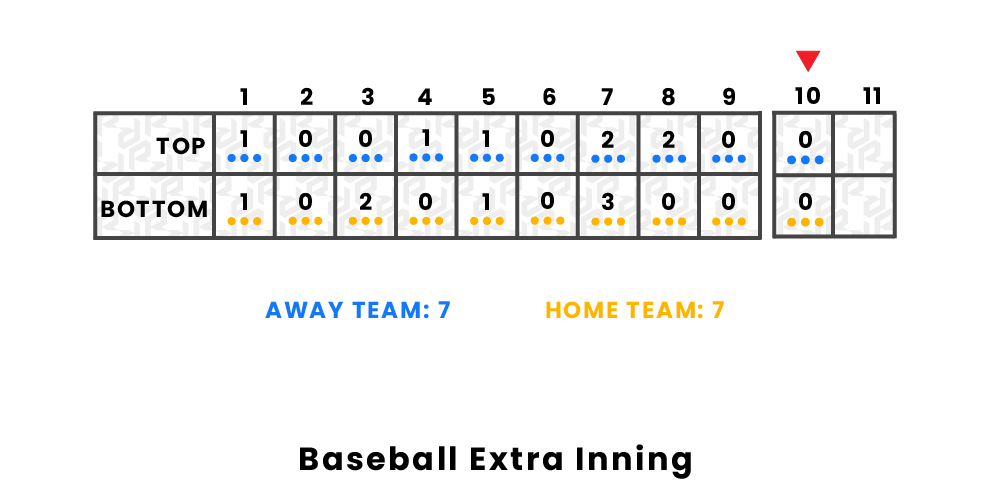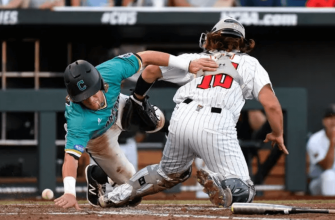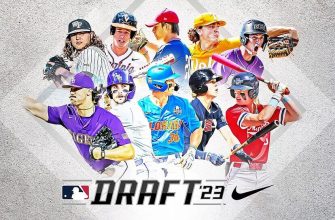Baseball has a distinctive format that makes it different from most other major professional sports like football, basketball, and soccer. Those sports utilize set game times, a running clock, and scheduled breaks like halftime to divide up the action. In contrast, baseball games unfold inning-by-inning with no timed quarters, halves, or periods.
This open-ended structure is an integral part of baseball’s identity and strategy. Without a clock dictating the pace of play, baseball has a more leisurely, story-like flow focused on singular moments within each at-bat. The lack of a halftime is one noticeable result of this format that further distinguishes baseball from other major sports.
Innings

A baseball game is divided into 9 innings of play. An inning consists of two halves, the top and the bottom, giving each team a chance to bat and a chance to field. During the top half, the visiting team bats and attempts to score runs while the home team takes the field to defend. After 3 outs are recorded, the teams switch places and the home team bats during the bottom half of the inning.
Traditionally, baseball games last 9 innings, unless the game is tied, in which case extra innings are played until a winner is determined. The 9 inning format became standardized in the late 19th century, though earlier in baseball’s history the number of innings varied from as few as 4 to as many as 21 during a game.
Halftime in Other Sports

Most major professional and collegiate team sports split their games into halves, including football, basketball, and soccer. Halftime was originally introduced in these sports to give the players a break and chance to strategize and make adjustments for the second half.
The length of halftime varies by sport:
-
In professional American football, halftime is 12 minutes long. In college football, halftime is 20 minutes.
-
In professional basketball, halftime is 15 minutes long. In college basketball, it’s 15-20 minutes.
-
In professional soccer, halftime is 15 minutes.
The halftime break gives coaches a chance to meet with players, analyze what went right and wrong in the first half, and make tactical adjustments for the second half. Players can rest, rehydrate, receive medical treatment, and mentally reset for the remainder of the game. Fans are also entertained during halftime with performances by marching bands, cheerleaders, or popular musical acts.
Between Innings
Between innings of a baseball game, there is a short break that allows teams to strategize and make adjustments before the next inning begins. This break typically lasts between 2-3 minutes, though it can be a bit longer for nationally televised games.
During this time, players return to the dugout to hydrate and confer with coaches and teammates. Pitchers warm up by throwing additional pitches in the bullpen, while position players stretch, review scouting reports, or make equipment adjustments. Grounds crew workers take the field to rake and water the infield dirt and replace the bases if needed.
In the stands, fans use this time to visit concession stands, use the restroom, socialize, or check phones. On-field promotions like mascot skits or fan contests may occur as entertainment. Broadcast teams recap the previous inning’s events and discuss the current game state. Scoreboard operators update stats and game info. Stadium music plays over the PA system until the break concludes and the next inning begins.
So while there is no formal “halftime” in baseball, these short breaks between innings allow for a similar mid-game respite and reset. The brief stoppages keep the game moving while providing occasional pauses in the action.
Seventh Inning Stretch
The seventh inning stretch is a popular tradition in baseball where fans stand up in the middle of the seventh inning and stretch their arms and legs. This break in the action allows fans to rejuvenate and prepare for the final innings of the game.
The exact origin of the seventh inning stretch is debated, but one popular story credits President William Howard Taft. On Opening Day in 1910, Taft attended a game between the Washington Senators and Philadelphia Athletics and stood up to stretch his legs during the middle of the seventh inning. The crowd, seeing the President stand, also rose to their feet which began the tradition.
Another theory is that the stretch originated with the New York Giants baseball club in 1869. The Giants were known to encourage fans to stretch during the middle of the seventh inning. Other stories link the tradition to Cincinnati Reds president Larry MacPhail who installed stadium announcements and music during the seventh inning stretch in the 1930s.
Regardless of its exact beginning, the seventh inning stretch has become ingrained in baseball’s culture at both professional and amateur levels. It provides a communal opportunity for fans to relax and gear up for the final part of a game before singing “Take Me Out to the Ballgame” or another stadium anthem. While the stretch itself usually only lasts a minute or so, it has become one of the sport’s most endearing and recognizable rituals.
Extra Innings

Extra innings are played in baseball when the score is tied at the end of the standard 9 innings. If the score is tied, additional innings are played until one team has more runs than the other at the end of an inning. This ensures a winner is determined.
Extra innings function just like regular innings in terms of gameplay. Each team bats, attempting to score runs while the other team pitches and plays defense. The one difference is that no new inning starts once 3 outs are recorded – that half-inning just ends and the other team comes up to bat.
Some of the most famous extra inning games in history include:
-
The 2018 World Series Game 3 between the Dodgers and Red Sox that went 18 innings, the longest World Series game ever played by innings.
-
Game 2 of the 2014 NLDS between the Giants and Nationals that lasted 18 innings before Brandon Belt hit a solo homer to end it.
-
A 2020 wild card series game between the Padres and Cardinals that went 13 innings. The Padres finally won after playing over 5 grueling hours.
Extra inning games test a team’s endurance, will, and depth. Getting contributions from unexpected players often makes the difference. Fans are on the edge of their seats wondering when the drama will finally end. It’s no wonder extra inning playoff games produce some of baseball’s most iconic moments.
Rain Delays
Rain delays are one of the closest things baseball has to an unofficial “halftime.” When inclement weather occurs during a baseball game, the umpire crew chief has the ability to temporarily suspend play until the weather conditions improve. This pause in play functions similarly to halftime in other major sports.
During a rain delay, the players return to the dugout while the field crew works to make the playing surface playable again. The fans take a break as well to wait out the weather. The delay can last anywhere from a few minutes to over an hour depending on the severity of the weather. Teams will often have food brought in for the players, allowing them to eat and relax during this “halftime” period.
If the game is delayed long enough, the starting pitchers may not return to the game when play resumes. This is similar to other sports where starters play the first half and reserves play the second. While not guaranteed, rain delays have the potential to function as an unofficial mid-game break.
Playoff Formats

There is no halftime break in playoff baseball games just as there is none in the regular season. Playoff formats in Major League Baseball vary in structure but all maintain the same gameplay of nine innings without a halftime.
In the regular season, teams play 162 games over 6 months against opponents from their league and division. Playoffs commence in October where 10 of the 30 teams qualify based on their regular season records. The playoff structure involves a single or multi-game series between opponents in the Division Series (DS) and League Championship Series (LCS) rounds. The World Series is the final best-of-seven championship round.
While playoff games have higher stakes, the core rules and format of baseball remains consistent. Each playoff game still consists of 9 innings divided into top and bottom halves, 3 outs per half-inning, and the same structure of having a batting team try to score runs against a fielding team. Having a halftime break mid-game would disrupt the natural flow and continuity of a baseball match. The gameplay is fundamentally centered around innings and outs, not segmented halves.
So in summary, despite different playoff formats, the lack of a halftime break is integral to the essence of baseball and upheld across regular season and postseason games.
Reasons Against Halftime
Baseball games do not have an official halftime period like other major sports primarily because the pace and format of the game does not necessitate or accommodate it. The game of baseball is already divided into discrete innings, providing natural breaks between periods of play.
Each team bats until they record 3 outs, which constitutes an inning, before the other team takes their turn at bat. This back-and-forth flow continues throughout the course of the game without any extended mid-game stoppage.
Introducing a halftime would disrupt the momentum of the game and throw off the rhythm that players rely on. The brief breaks between innings allow for situational planning, strategy adjustments, and regrouping which suit the start-and-stop nature of baseball. Additionally, baseball games can vary greatly in length depending on the number of innings played. With games ranging anywhere from 3 to 4 hours, there is no clear halfway point to break for an extended halftime.
Ultimately the unique format of innings, outs, and continuous back-and-forth play in baseball eliminates the need for an artificial haltime segment. The natural breaks already built into the structure of the game serve the necessary purpose of providing intermittent stopping points for teams to strategize and fans to take a break.
Conclusion
Unlike most other major American professional sports like football, basketball, hockey, and soccer, baseball does not have an official halftime period. While there are breaks between innings and sometimes longer breaks between the top and bottom of an inning, the continuous nature of the game is an integral part of baseball. The lack of a halftime means teams must strategize and make adjustments while play is ongoing, and fans get nine full innings of uninterrupted action.
While some argue baseball could benefit from a halftime show or extended break, implementing halftime would disrupt baseball’s flow and identity. Ultimately, the decision not to include an official halftime period is consistent with the gradual, unfolding strategy of the game itself.








